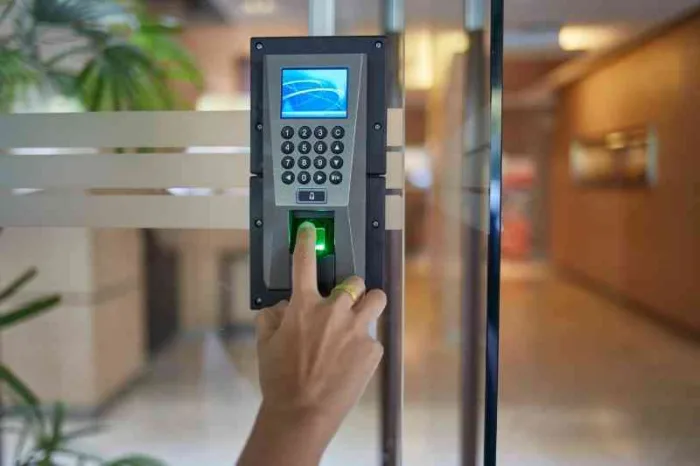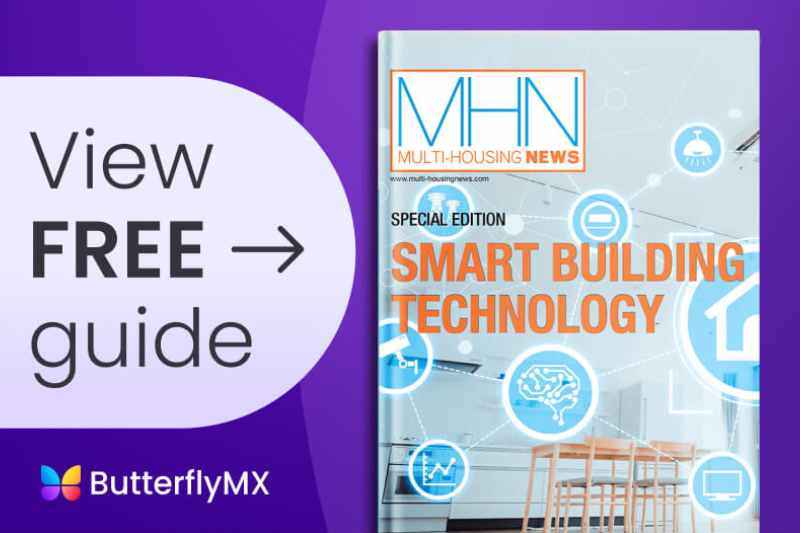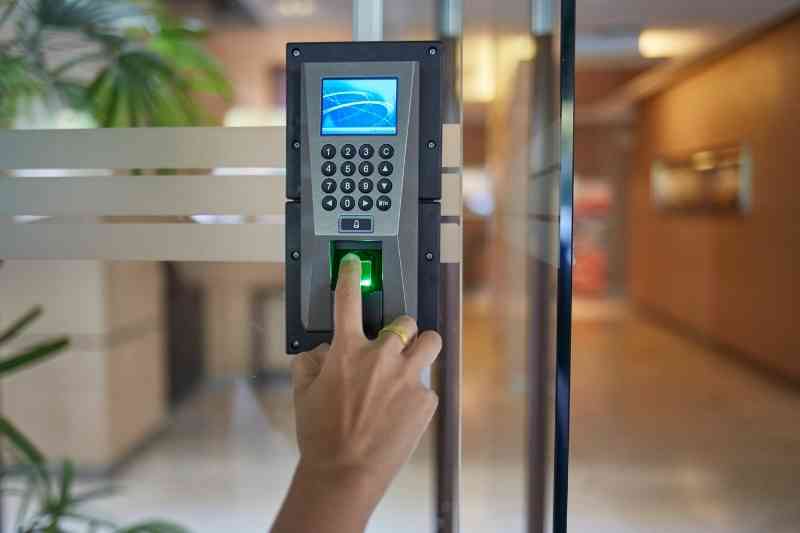
Takeaways
- The best locks are Smonet smart lock, Ultraloq U-Bolt Pro, Eufy Smart Lock Touch, Samsung fingerprint digital door lock, and HuTools keyless entry door lock.
- A fingerprint lock is a type of biometric lock that uses your fingerprint as a credential.
- A fingerprint smart lock uses your fingerprint as a biometric credential and converts this data into a numerical pattern.
- Other types of biometric door locks include facial recognition, voice recognition, and iris scanners.
- Finger print locks are more secure than passwords because they are more difficult to hack.
Ensuring simple yet secure access is key for every property. So, choosing the best smart locks for your building is vital. So, using a fingerprint lock as your commercial door lock eliminates the cost of having to replace physical keys. Additionally, biometric locks are also secure and easy to use.
Read on to learn what a fingerprint lock is, how it works, and the benefits of biometric locks for commercial doors. Finally, discover our picks for the five best fingerprint biometric locks.
In this post, we cover:
- 5 best fingerprint locks
- What is a fingerprint lock?
- How does a fingerprint door lock work?
- Other types of biometric devices
- Is a fingerprint lock better than a password?
- Pros and cons of fingerprint locks
5 best fingerprint locks
- Smonet smart lock: Best for commercial and multifamily buildings.
- Ultraloq U-Bolt Pro: Most versatile with 6 ways to unlock.
- Eufy Smart Lock Touch: Best with data protection.
- Samsung fingerprint digital door lock: Best with up to 100 user codes.
- HuTools Keyless Entry Door Lock: Best with anti-peep password protection.
1. Smonet smart lock
Pros:
- Integrates with Google and Alexa voice assistants.
- Registers up to 250 fingerprints.
- Convenient auto-lock feature.
- Easy to install.
- Long battery life.
Cons:
- Pricey at $109.99.
- Doesn’t support smart hub connections.
2. Ultraloq U-Bolt Pro
Pros:
- Durable design.
- Auto-lock technology.
- Shareable E-keys.
- IP65 weatherproof.
- 6 ways to unlock.
Cons:
- Pricey at $189.99
- Smartphone app may lose connection if the WiFi goes out.
Read the full U-Bolt Pro lock review »
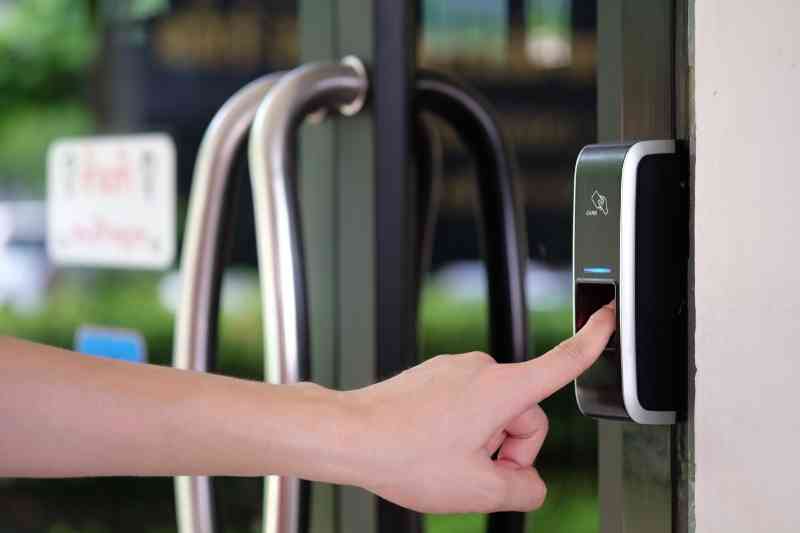
3. Eufy Smart Lock Touch
Pros:
- Four ways to unlock.
- Features bank-grade encryption chip for enhanced data protection.
- Micro-USB rechargeable.
- Auto lock capabilities.
- Weather-resistant.
Cons:
- May require a lever-handle door with a deadbolt for installation.
- Pricey at $169.99
Read the full Eufy lock review »
4. Samsung fingerprint digital door lock
Pros:
- Sophisticated design.
- Easy auto-locking.
- Fire detection sensor.
- Anti-tampering technology.
Cons:
- Pricey at $399.00.
Read the full Samsung review »
5. HuTools Keyless Entry Door Lock
Pros:
- Features a backlit keypad.
- Stores up to 20 user codes.
- Auto-locking.
Cons:
- Pricey at $139.99
- Not waterproof.
Read the full HuTools lock review »
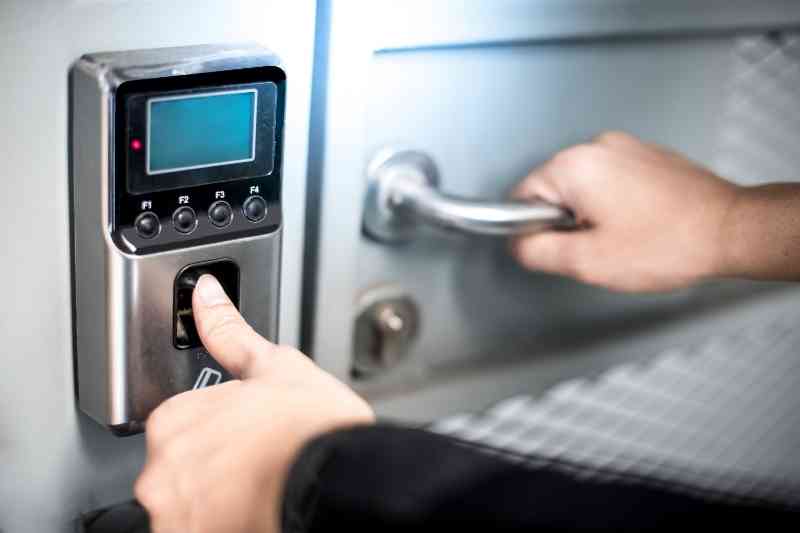
What is a fingerprint lock?
A finger print lock, also called a thumbprint door lock, is a type of biometric door lock that uses your fingerprint as a credential. To do this, the lock scans and saves each tenant’s fingerprint. The lock will then use a person’s fingerprint as the access credential whenever someone attempts to open the door and will unlock if the fingerprint is a match.
Most finger and thumbprint door locks store dozens or even hundreds of fingerprints which makes them a convenient choice for multifamily and commercial buildings.
How does a fingerprint door lock work?
A fingerprint smart lock uses your fingerprint as a biometric credential and converts this data into a numerical pattern. Then, the lock uses this information as the credential for opening the lock.
The average lock only needs about half a second to scan and read a fingerprint. From start to finish, opening a door with a biometric deadbolt only takes around 2 seconds, which makes it a quicker alternative to physical keys.
Other types of biometric devices
Fingerprint scanners aren’t the only biometric door lock systems on the market. In fact, there are several other types that are both accessible and fairly easy to install.
Biometric access control devices include:
- Facial recognition. Many of you may already have facial recognition on your phones, which means it’s easy for you to conceptualize it. Essentially, facial recognition access consists of stored imagery of facial features that must match when scanned to gain access to a building.
- Voice recognition. These systems use the unique vocal signatures of users to match with stored data. When the vocal credential is verified, tenants are granted access.
- Iris scanners. Irises also have unique patterns that make this kind of biometric access a secure form of identification.
How to install a biometric lock
You can hire an installer to set up your lock or do it yourself. However, if you’ve never removed or installed a lock on a commercial door, it’s recommended to hire a technician to avoid causing unnecessary damage or voiding your warranty.
To install a fingerprint reading lock:
- Remove the old lock from your door.
- Drill holes about two inches deep into the door.
- Secure bolt and latch.
- Install the lock.
- Set up and configure the lock.
Is a fingerprint lock better than a password?
Fingerprint locks are more secure than passwords because they are more difficult to hack. For this reason, biometric locks are one of the most secure types of commercial smart locks.
What’s more, fingerprint door locks are faster than other kinds of smart locks because the credentials are right at your fingertips!
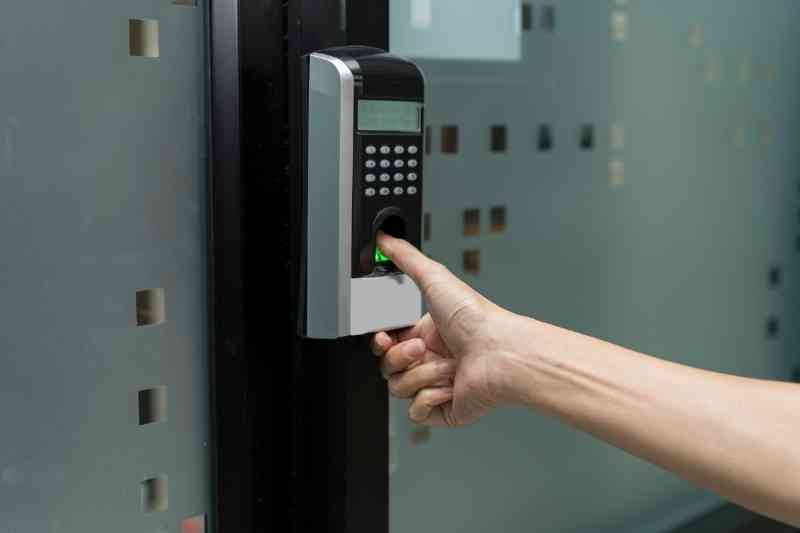
Pros & cons of fingerprint locks
Determining whether a touch ID door lock is a good fit for your property depends on your building’s security needs and the number of people using the lock daily.
Here are some pros and cons of these types of locks:
Benefits
- Faster than conventional locks. Scanning your fingerprint as a credential is faster than using a conventional key or entering a passcode.
- More secure than other kinds of locks. Physical keys can be stolen or copied, which can impact security. Fingerprint credentials are more difficult to replicate than physical keys.
- More reliable than keys and fobs. Traditional keys can be lost and are often costly to replace. But fingerprints are a credential that everyone has! So, you won’t have to worry about replacing keys with a lock for fingerprints.
- More affordable than other biometric locks. Locks that use other biometric credentials like iris scanners or voice authentication are more expensive.
Learn more about ButterflyMX:
Disadvantages
- Difficult to reset. Fingerprint credentials are harder to reset than passwords, and in some cases, the lock may need to be replaced entirely.
- Can be fooled. It’s rare, but the lock can sometimes be tricked by an image of a fingerprint or mold.
- May not recognize your fingerprint. If you have cuts, scars, or other abrasions on your fingertips, the lock may not always recognize your print.
- May not work during power outages. Biometric smart locks that haven’t been integrated with a mechanical locking system may stop working if the power goes out.
- Requires fingerprinting each tenant. Scheduling a time to program every resident’s and staff member’s fingerprint into the lock can take a long time.
